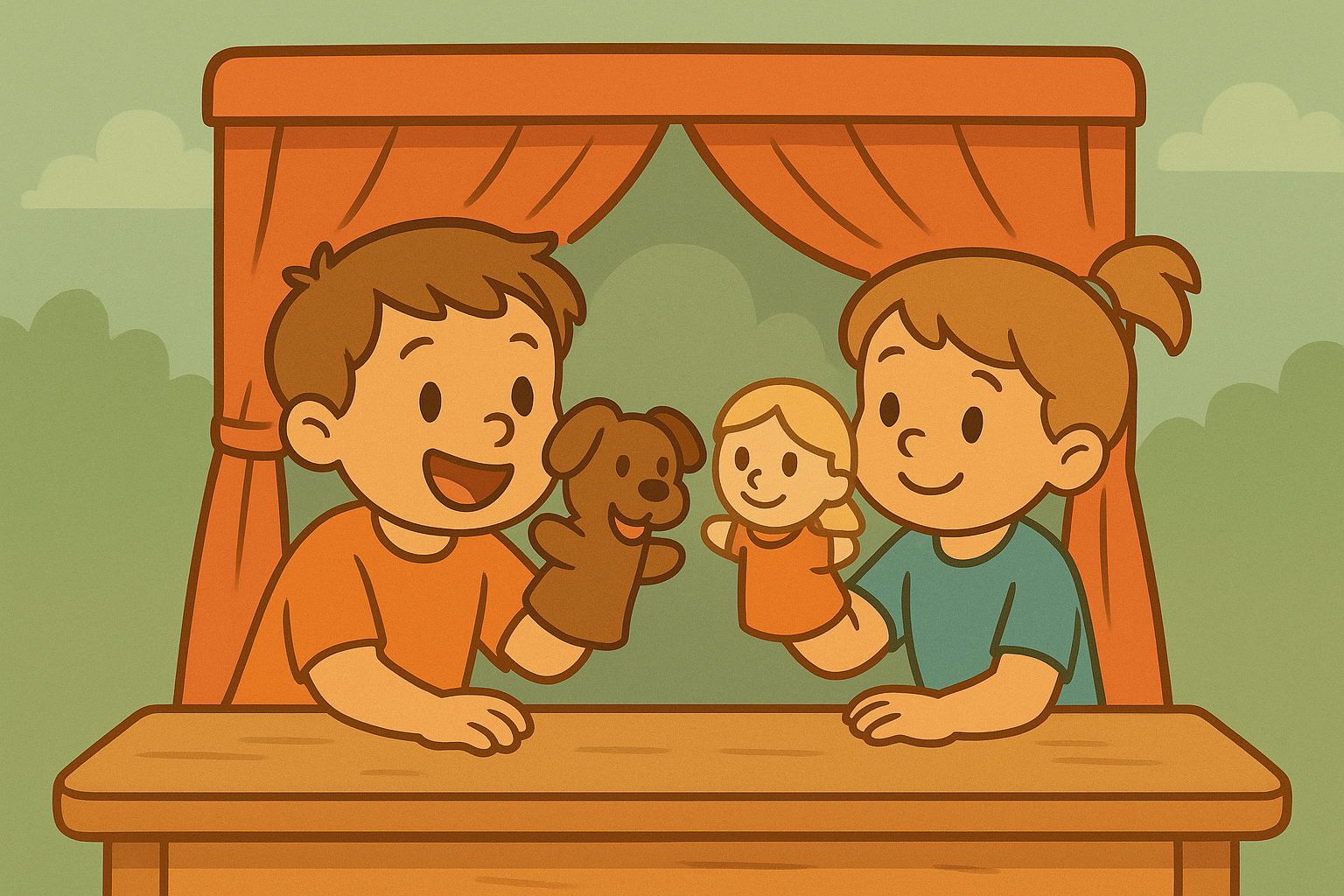Using Puppet Skits to Explore Feelings and Friendship
Using Puppet Skits to Explore Feelings and Friendship
Puppets aren’t just silly props — they’re emotional translators. When feelings feel too big, too confusing, or too embarrassing for kids to talk about directly, puppets give them safe distance. Through puppet skits, children can practice friendship skills, navigate conflict, and explore social dilemmas without feeling exposed.
This playful tool bypasses defensiveness and invites empathy, imagination, and problem-solving.
Why Puppet Skits Work for Emotional Learning
Children learn through:
imitation,
rehearsal,
storytelling,
play.
Puppets create emotional distance that helps children:
open up,
share aloud,
try new language,
explore “what if” scenarios.
Kids think:
“The puppet is learning… I can practice, too.”
This mirrors the gentle emotional distance discussed in Using Puppets to Teach Emotional Literacy.
Create a Cast of Characters (With Clear Traits)
Assign simple personalities:
Brave Bella (courageous in new situations)
Curious Max (asks thoughtful questions)
Gentle Jo (soft-spoken and caring)
Nervous Nico (needs encouragement)
Excited Ellie (sometimes impulsive)
Distinct traits let kids explore:
empathy,
perspective-taking,
social nuance.
Let kids “play” the personality that mirrors or balances their own.
Act Out Common Friendship Challenges
Use skits to rehearse:
turn-taking,
sharing toys,
waiting in line,
including new friends,
apologizing,
joining play,
handling disappointment.
Give the puppet a relatable problem:
“I want to play, but I don’t know how to ask.”
Then ask:
“What should Puppet say?”
This echoes small social rehearsals described in Teaching Patience Through Play.
Practice “Big Feeling” Moments Safely
Use puppets to explore:
jealousy,
sadness,
frustration,
embarrassment,
sensory overload,
rejection.
Neutralize intensity by letting feelings belong to the puppet first.
For deeper exploration, pair this with strategies from Helping Kids Express Sadness Without Shame.
Model Empathic Responses
During the skit, model empathy:
“Puppet feels left out. What could we say?”
Offer scripts your child can adopt:
“You can play with us.”
“I’ll wait while you finish.”
“That hurt my feelings.”
These responses strengthen friendship bonds.
This aligns with emotional vocabulary building in Building Emotional Vocabulary Through Books.
Let Kids Direct the Skit (They Reveal More Than You Think)
Hand over control:
“Show me what happens next!”
Kids often reveal:
worries,
power dynamics,
school experiences,
sibling patterns.
Their direction offers you clues they might not verbalize directly.
Observe gently — don’t interrogate.
Use “Do-Over” Scenes for Repair Practice
When puppets make mistakes:
“Oh no! I grabbed without asking.”
Ask your child:
“What could Puppet try instead?”
Then replay the moment correctly.
Rehearsing repairs builds:
✨ empathy
✨ flexibility
✨ confidence
It mirrors “redo” strategies in Teaching Kids How to Handle Disappointment Gracefully.
Introduce Helpful Friendship Scripts
Teach social starters:
“Can I join?”
“Want to play together?”
“Can I be next?”
“I need space.”
Teach boundary scripts too:
“Not right now.”
“Stop, I don’t like that.”
“I’m using this. You can have it after.”
Puppets remove the pressure of rehearsal.
Use Puppets During Social Conflicts at Home
Sibling tension?
Let puppets:
demonstrate arguing,
try interrupting,
show pushiness,
practice sharing language.
Kids giggle — and learn.
Frustration softens when puppets are involved.
Highlight Body Language Clues
Ask:
“How can we tell Puppet feels nervous?”
Point out:
slumped posture,
slow movements,
turned-in shoulders.
Kids begin reading real-life cues — a social superpower.
This connects to noticing bodily sensations from The Science of Emotional Regulation in Children.
Rotate Roles: Hero, Helper, Hurting
Kids need to experience:
being included,
including others,
repairing mistakes,
being brave,
comforting sadness.
Rotate puppet roles regularly:
“Now Puppet is the one who feels left out.”
Perspective shifts build empathy.
This pairs perfectly with When Kids Feel Left Out: How to Support Them.
Puppet skits make emotional learning playful, safe, and honest. By rehearsing tricky moments through characters, kids build confidence, empathy, and repair skills without pressure. Over time, these gentle “practice reps” teach that feelings are manageable and friendships can be fixed. And by weaving emotional learning into play, you’re giving your child tools they’ll use long after the skit ends.
This content is for educational purposes and is not a substitute for professional medical or psychological advice.
Popular Parenting Articles


